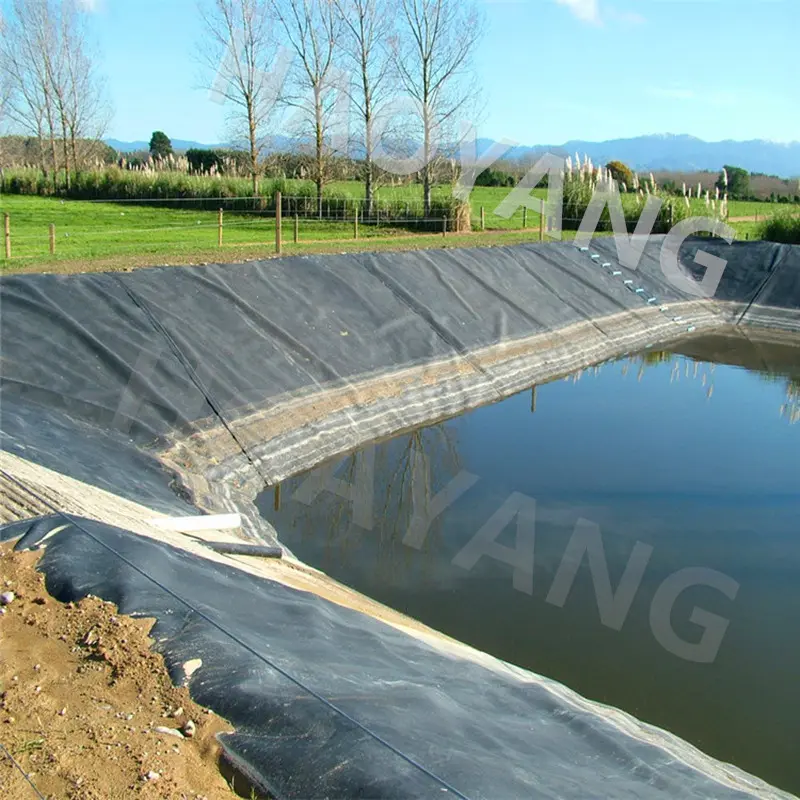High-Density Polyethylene (HDPE) geomembrane liners have become an essential component in various civil engineering projects, particularly those involving environmental protection, waste management, and water containment. The versatility, durability, and resistance to a broad range of chemicals make HDPE geomembrane liners a preferred choice in numerous industries. However, not all HDPE geomembranes are created equal. Different grades are available, each suited to specific applications based on factors like thickness, flexibility, and chemical resistance.
Understanding HDPE Geomembrane Grades
HDPE geomembranes are generally classified based on their thickness, which ranges from 0.5 mm to 3 mm or more. These thickness variations directly influence the liner's performance in various applications. The most common grades include:
Low-Density HDPE Geomembrane (0.5 mm - 1 mm):This grade of HDPE geomembrane is characterized by its lower thickness, which provides excellent flexibility and ease of installation. It is commonly used in applications where high tensile strength is not critical, but a reliable barrier is necessary. Typical uses include secondary containment systems, canal linings, and temporary liners for construction sites.
Medium-Density HDPE Geomembrane (1 mm - 2 mm):The medium-density HDPE geomembrane offers a balance between flexibility and durability. With higher tensile strength and puncture resistance compared to the lower-density variants, this grade is ideal for more demanding applications such as landfill capping, pond liners, and waste containment systems. Its increased thickness also enhances its UV resistance, making it suitable for exposed applications.
High-Density HDPE Geomembrane (2 mm - 3 mm+):The high-density HDPE geomembrane represents the premium end of the spectrum, designed for the most challenging environments. With superior puncture resistance, chemical resistance, and long-term durability, this grade is used in critical applications such as hazardous waste landfills, mining operations, and large water reservoirs. The increased thickness provides exceptional protection against environmental stressors and mechanical damage.
460269.webp)
Applications of HDPE Geomembrane Liners
The choice of HDPE geomembrane grade depends on the specific requirements of the project. Here are some common applications for each grade:
Canal and Reservoir Linings:For canal and reservoir linings, medium-density HDPE geomembranes (1 mm - 2 mm) are often preferred. These liners provide sufficient durability and puncture resistance to withstand the hydraulic forces while ensuring minimal seepage. In regions with extreme temperatures, the UV resistance of these liners ensures long-term performance.
Landfill Capping and Waste Containment:In landfill capping and waste containment, the role of HDPE geomembranes is critical in preventing leachate from contaminating groundwater. High-density HDPE geomembranes (2 mm - 3 mm+) are typically used in these applications due to their superior chemical resistance and durability. The thickness of these liners offers a robust barrier against the toxic chemicals present in waste materials, ensuring environmental safety over extended periods.
Mining Operations:Mining operations involve the storage and containment of highly acidic or alkaline substances, which can degrade standard liners over time. High-density HDPE geomembranes are the ideal choice in such scenarios. Their resistance to aggressive chemicals and mechanical damage ensures the integrity of containment systems, reducing the risk of environmental contamination.
Agricultural Ponds and Aquaculture:For agricultural ponds and aquaculture, where water quality is paramount, low to medium-density HDPE geomembranes (0.5 mm - 2 mm) are commonly used. These liners provide a cost-effective solution that ensures water retention while being safe for aquatic life. The flexibility of lower-density liners makes them easy to install in irregularly shaped ponds.
Advantages of HDPE Geomembranes
HDPE geomembranes are favored for their remarkable properties, which include:
Chemical Resistance:HDPE geomembranes exhibit high resistance to a wide range of chemicals, including acids, bases, and solvents, making them suitable for hazardous waste containment.
Durability:With excellent tensile strength and puncture resistance, HDPE geomembranes can withstand mechanical stress, making them ideal for long-term applications.
UV Resistance:The UV-resistant properties of HDPE geomembranes allow them to perform effectively in exposed environments without degradation over time.
Flexibility and Versatility:HDPE geomembranes can be tailored to suit various project requirements, offering flexibility in both application and installation.

Choosing the Right HDPE Geomembrane
Selecting the appropriate grade of HDPE geomembrane is crucial to the success of any project. Factors such as environmental conditions, chemical exposure, and the intended lifespan of the liner should all be considered. Consulting with an expert in the field can provide valuable insights into the best product for your specific needs.
Why Haoyang Environmental’s HDPE Geomembranes Are the Best Choice
When it comes to choosing the best HDPE geomembrane, Haoyang Environmental is the industry leader. Their products are manufactured to the highest standards, ensuring superior performance across all applications. Whether you require a liner for a small pond or a massive landfill, Haoyang Environmental’s HDPE geomembranes offer unmatched durability, chemical resistance, and ease of installation. Their commitment to quality and innovation makes them the go-to choice for engineers and contractors worldwide. Trust Haoyang Environmental to provide the best HDPE geomembrane solutions for your project’s success.
660.webp)
352.webp)
503.webp)
759.webp)
558.webp)
_new879.webp)
196.webp)